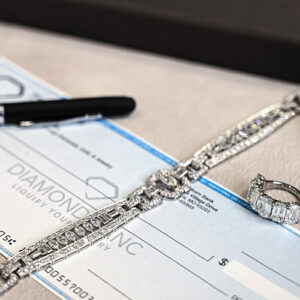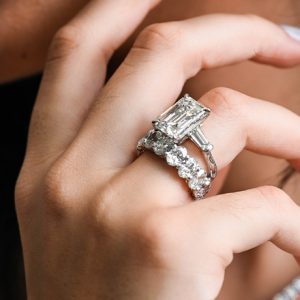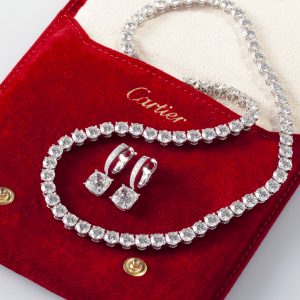The diamond industry continues to grow and expand. According to the Zimnisky Global Rough Diamond Price index, rough diamond prices were up 28% in the year 2021. With the diamond industry continuing to reach new heights, consumer trends are changing sales patterns. During the pandemic, around 25% of all sales from diamond buyers were taking place online.
When you think about diamonds and pawn jewelry in Tampa FL, you immediately consider the 4Cs. The 4Cs of diamonds include the cut, clarity, color, and the carats or weight of the diamond. It is easy to categorize diamonds with these four qualities and attempt to identify the uniqueness of each piece. But occasionally you may need to dig deeper beyond the 4Cs.
BEYOND THE 4CS
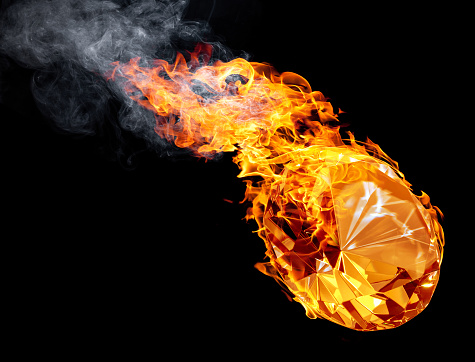
You need to go beyond the 4Cs to differentiate diamonds from each other. A diamond’s formation process begins deep within the Earth. Extreme heat from the earth paired with intense pressure result in what are known as inclusions. Inclusions, small imperfections found within the structure of the diamond, are internal clarity characteristics.
Professional diamond graders use magnification to examine each diamond for blemishes, inclusions, and more. The greater the clarity of a diamond, meaning it has very few or no inclusions, the higher the value and the rarity.
WHY ARE CLARITY CHARACTERISTICS CRITICAL TO A DIAMOND
Why is it so important to consider a diamond’s clarity characteristics? When a professional grader is looking at a diamond, there are 11 grades on the GIA Clarity Scale. The vast majority of diamonds will be in the grades of VS, or very slightly included, or S which means slightly included.
With your naked eye, when you look at a diamond that has an S or an SI rating, you may notice no difference. It takes an expert to determine the difference. These variances and grading can lead to clarity characteristics greatly impacting the value of the diamond. The clarity scale includes the following:
- Flawless (FL)
- Internally Flawless (IF)
- Very, Very Slightly Included (VVS1 to VVS2)
- Very Slight, Included (VS1 – VS2)
- Slightly Included (SI1 – Si2)
- Included (I1 – I3)
You need to make clarity characteristics critical when searching for a diamond. While inclusions and blemishes are not something you can spot with the naked eye, it does not mean they are not there. Be aware of these during the purchase process so you understand the value.
CUT, QUALITY AND THE IMPACT ON PRICE
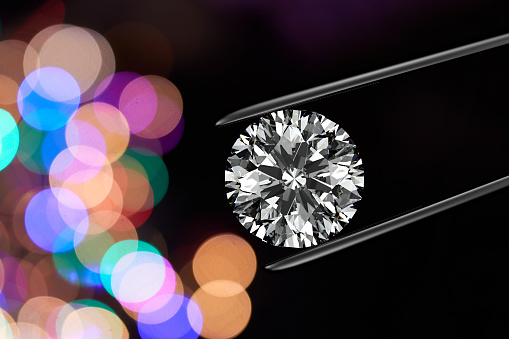
The cut quality of a diamond is going to impact its brilliance, radiance, and the visual appeal overall. The GIA has grading in place for the cut quality of a diamond. A professional grader will be able to appraise the cut grade of the diamond. These ratings include:
- Excellent – The highest level of fire and brilliance.
- Very Good – Exceptional fire and brilliance.
- Good – Good fire and brilliance.
- Fair – Little brilliance and fire.
- Poor – Minimal fire and brilliance or sparkle
The cost of a diamond with an Excellent or a Very Good rating is going to hold a higher value than one with Good or Fair quality. When analyzing the cut of a diamond, look at how it reflects light. Place it under a normal lamp and see the light reflects. Look for dark spots, as well as blemishes. The trick with cut quality is that you could end up paying up more for a diamond with an Excellent cut quality when you compare it to one with Fair quality, but not that much more.
DOES FLUORESCENCE HAVE AN IMPACT ON THE PRICE POINT?
So what exactly is diamond fluorescence? UV diamond fluorescence is something that you see in about 35% of all colorless or white diamonds. Fluorescence refers to a diamond’s tendency to emit a soft colored glow when subjected to ultraviolet light. Occasionally, when a diamond is forming, trace elements of aluminum, boron, or nitrogen are absorbed by the diamond.
The most common color of fluorescence that you will see from diamonds is a blue color. Blue fluorescence can be a positive factor in diamonds with a yellow tint. Because blue is a complementary color to yellow, the combination of these two gives it a more white appearance when exposed to UV rays.
Particular color grades pair better with particular fluorescence grades. The value of a diamond is not notably affected if the diamond has faint fluorescence.
SAVINGS FROM DIFFERENT DIAMOND CERTIFICATIONS
There is also an impact you will see on the price point of diamonds depending on who performed the certification. The Gemological Institute of America (GIA) is the most prevalent in the diamond industry. The grading reports by the GIA have been considered best-in-class. There are other reports that you can go with though that, while they may not carry as much weight in brand appeal, is still very worthwhile to seek out. These include the American Gem Society (AGS), HRD Labs, as well as Gem Certification and Assurance Lab (GCAL). Other labs worth consideration include the PGS, GSI, as well as EGL labs.
A FOCUS ON DIAMOND POLISH AND SYMMETRY
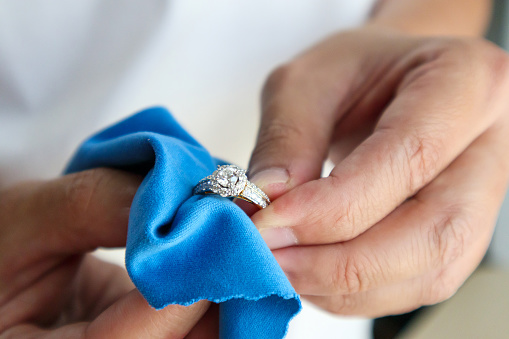
Diamond polish and symmetry is critical as you are shopping for that perfect piece. When a diamond is cut, the cutter will finish the stone off. The result is it will be as smooth as glass. The diamond polish process is the final piece being done to the diamond before it is ready for sale. Diamond polish influences how well light is able to pass through a diamond. During the polish, you can have issues with the scratching and nicking of the diamond, as well as abrasions. All of these can impact the polish and the price point.
Symmetry works much the same. The symmetry grade of a diamond refers to the external balance and alignment of the facets. When a diamond is perfectly symmetrical, it will command a higher price tag.
TAKING AN EQUITY LOAN AGAINST YOUR DIAMOND JEWELRY
There is no impact at all on the value of your jewelry if taking a loan against them. The value of your diamond rests with the diamond itself. The fact that you went to pawn jewelry in Tampa FL will have no impact on its value at all. Diamond buyers value the diamond itself, the 4Cs, and what lies beyond them. Pawn jewelry is just as worthy as any other type of jewelry out there.
Pawn jewelry in Tampa FL is a convenient option if you find yourself in a financial crisis. Working with the team at Diamond Banc, you will find that you can take a loan and recuperate financially. There is much potential and it all starts with having quality jewelry diamond buyers. Choose Diamond Banc for their integrity, expertise, and transparency while offering you true value when seeking a loan against your diamond jewelry.
Diamond Banc is the nation’s top-rated jewelry buyer & lender. Visit one of our nationwide locations, or work with us from the comfort of your home.
CONTACT DIAMOND BANCGET A LOANSELL MY DIAMOND
